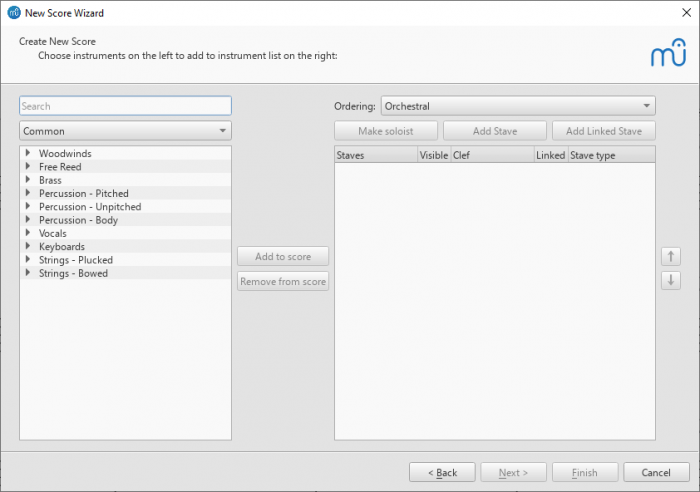Disagreements are not uncommon, although when Zenwalk project lead Jean-Philippe Guillemin's move to oust the previously very active team member George Vlahavas caused a number of team members to walk, the disaffection led to an entirely new distro called Salix OS. It seems team members wanted to get it back closer to Slackware.
The first Salix release (13.0) is available for download on the Salix homepage. The bonsai ('small, light and the product of infinite care') release comes in three installation versions:
The world's best-selling music notation software. Sibelius is the easy way to write, refine, hear, scan and print beautiful scores. The 'classic' Mac OS is the original Macintosh operating system that was introduced in 1984 alongside the first Macintosh and remained in primary use on Macs until the introduction of Mac OS X in 2001. Apple released the original Macintosh on January 24, 1984; its early system software was partially based on the Lisa OS and the Xerox PARC Alto computer, which former Apple CEO Steve Jobs. Abs acos acosh addcslashes addslashes aggregate aggregateinfo aggregatemethods aggregatemethodsbylist aggregatemethodsbyregexp aggregateproperties aggregatepropertiesby.
- Full installs the complete ISO with Xfce as the desktop environment, Firefox as browser and Claws-mail as the email client. It also includes OpenOffice, JRE, Totem as media player and Exaile as music manager.
- Basic also installs the Xfce desktop with Firefox, but drops the larger components such as OpenOffice and the JRE.
- Core installs a minimal Salix OS without a graphical interface.
Salix is currently in CD image for 32-bit systems and optimized for i486. Source code (1 GByte) is also available on DVD.
[prMac.com] Coral Springs, Florida - mDecks Music LLC is pleased to announce the release of Mapping Tonal Harmony Pro 7.2.5, an important update to their interactive music theory app for macOS. Mapping Tonal Harmony Pro was developed exclusively to study tonal harmony, cadences, chords and chord-scales, all accompanied by 7 workbooks to teach and study tonal harmony.Mapping Tonal Harmony Pro has been envisioned as auxiliary material in the study of Tonal Harmony. The main objective of this app is to provide the student, teachers, composers and/or songwriters with a tool that will aid them in hearing, analyzing, foreseeing and composing harmonic progressions without struggle, in all keys alike. Study Tonal Harmony in different styles: Classical, Jazz, Rock/Pop, Blues, Gospel, Contemporary and more.
The map has seven levels of complexity, from the basic diatonic neighborhood advanced secondary functions in major and minor modes and is viewable in all 12 keys and enharmonic spellings, plus a functional view (relative to the tonic). Each level is also accompanied by its respective workbook available at mDecks.com for further study and research.
Create your own progressions and workouts or download progressions book files with, tonal harmony progressions, jazz theory progressions and workouts, or entires song progressions. View their harmonic analysis in different formats which you can view in any key and print:
7 Map Levels:
1) Basic Diatonic functions
 2) IIIm and Deceptive Cadences
2) IIIm and Deceptive Cadences3) SubV7 and Neapolitan sixth (N6)
4) Secondary Dominants
5) Blues and other modes
6) Advanced Secondary Dominants
7) Complete Map with all functions
10 Map Layouts for different styles:
1) Jazz Standard
2) Blues
Enharmonic Mac Os Update
3) Late Baroque - Early Classical
Enharmonic Mac Os X
4) Late Classical5) Romanticism
6) Pop/Rock
7) Gospel
Enharmonic Mac Os Download
8) Contemporary Pop/Rock
Enharmonic Mac Os Catalina
 9) Quartal Music
9) Quartal Music10) All Possibilities
9 Staff Layout Templates (and you can create your own):
1) Full Analysis
2) Analysis without scales
3) Omit Functional Analysis
4) Only Functional Analysis
5) Lead Sheet Standard
6) Lead Sheet Large
7) Lead Sheet Small
8) Smaller Tonal Harmony Worksheet
9) Tonal Harmony Worksheet
Version 7.2.5 sports a new Reharmonizer to create a reharmonization of the current progression. There are also new Play-along Styles: These new styles (starting with Z) will favor playing all the chord changes in the progression at all times. The other styles use a more loose approach, sometimes leaving some chord changes out to balance spacing in the bass & piano accompaniment. There is also new Auto-Spacing. Users can enable auto-spacing (progression panel's top menu) to automatically space chords appart avoiding overlapping in dense scores. Disable auto-spacing to evenly space quarter notes and measures. Play-along style now changes atuomatically to the default for that song when loading.
Play-along in different Styles such as Jazz, Blues, Bossa, Rock/Pop. Choose tempo, adjust volumes, reverb, or apply a limiter to any of the instruments. Mapping Tonal Harmony will play the functions using 3 to 6 voices, resolve voice-leading, add tensions for jazz using customizable voicing creation rules or using just chord-tones for classical progressions. You can adjust the volume of each voice independently, and use a bass sound on the lowest note if you like.
Create workouts in just one click to practice progressions in all twelve keys. View the voicings in standard music notation or in the piano keyboard. View the chord-scale and identify chord-tones, tensions and avoid notes. The score editor has all the necessary tools to create a complete song-form, including sections, repeats, DS. al Coda, Fine, First Endings, direct modulations and common-tone modulations
Save your songs to the catalog or export entire progressions-books and share them with other Mapping Tonal Harmony Pro users. Transpose your progression to any key and print it using any of the preloaded layouts or create your own.
System Requirements:
* macOS 10.12 or later
* 64-bit processor
* 116.3 MB
Pricing and Availability:
Mapping Tonal Harmony Pro 7.2.5 is $29.99 USD (or equivalent amount in other currencies) and available worldwide exclusively through the Mac App Store in the Music category.